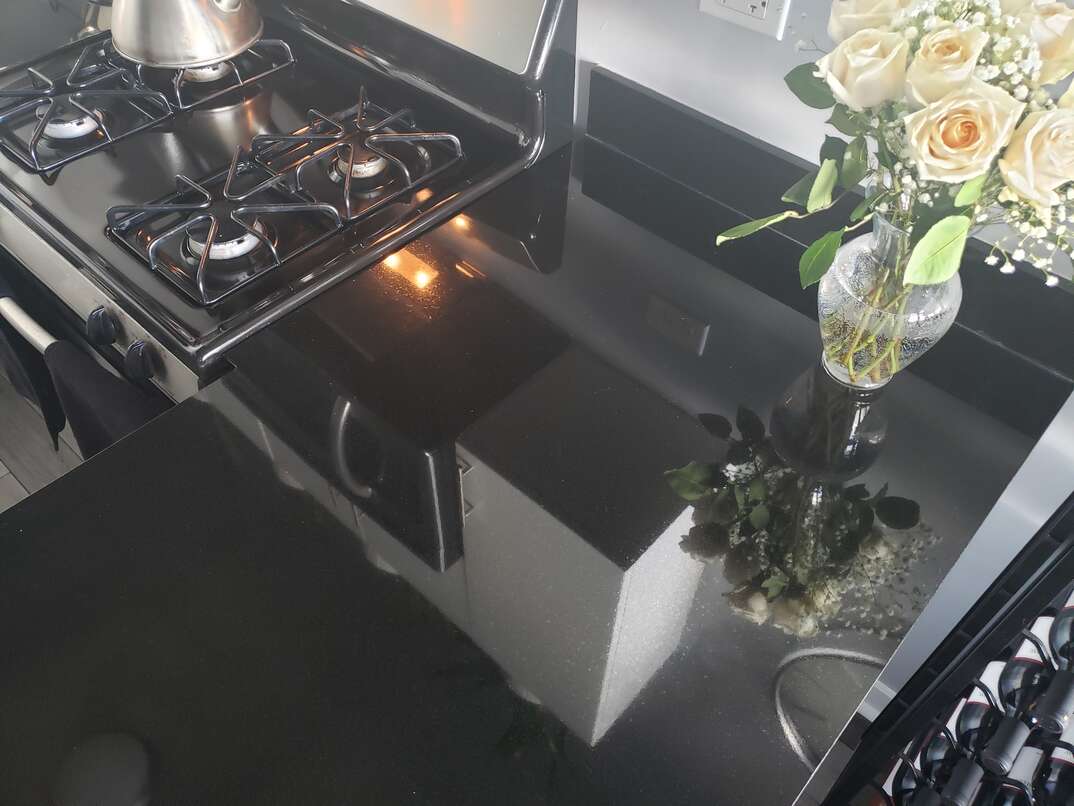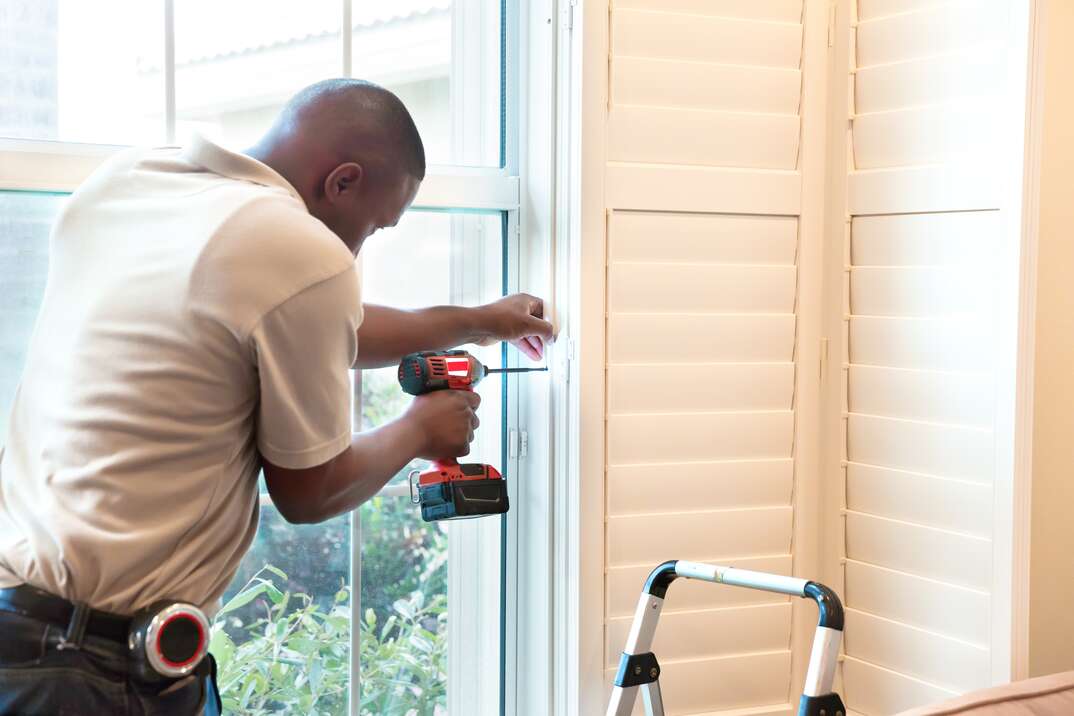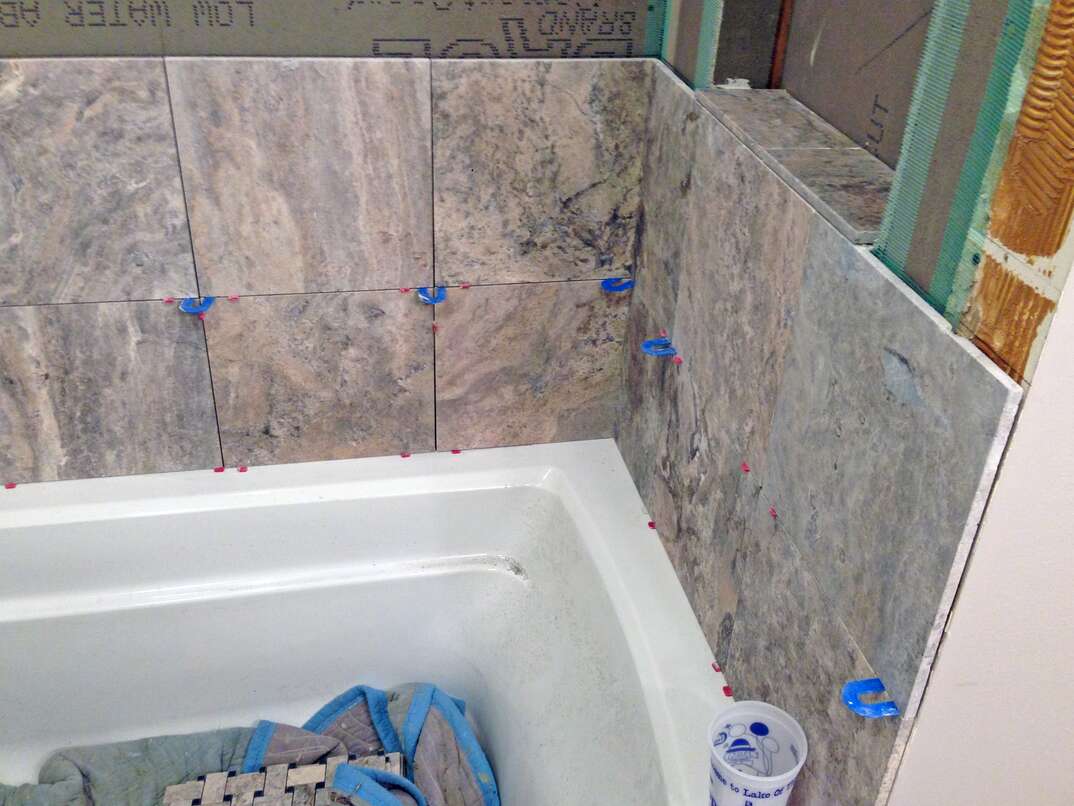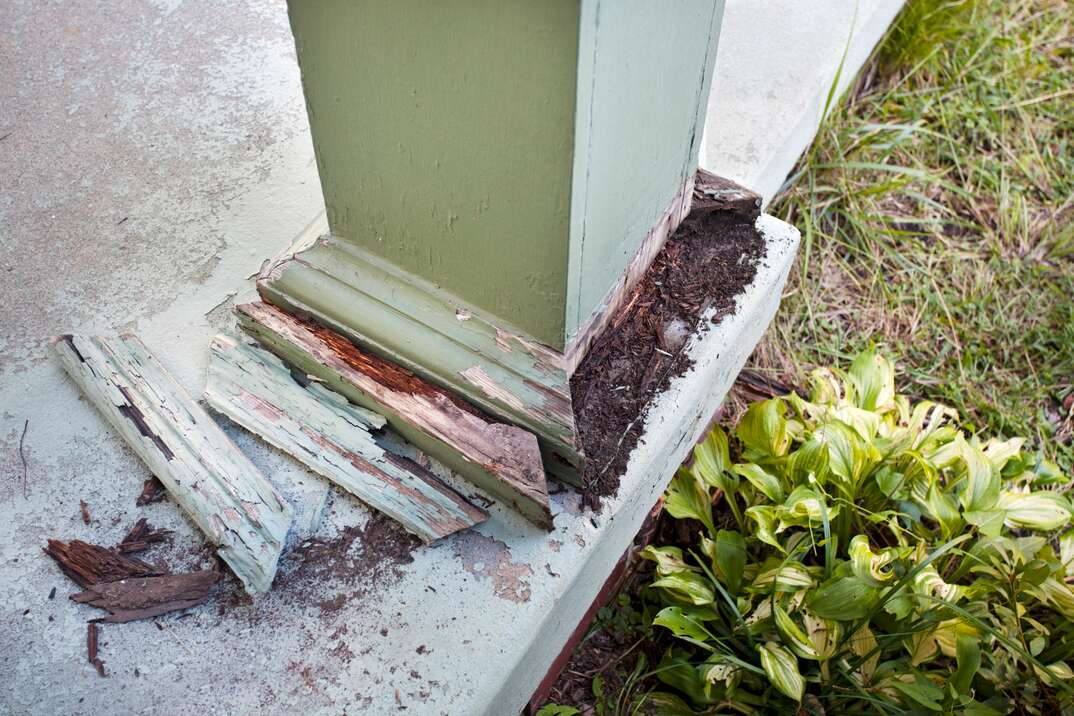How Much Are Granite Countertops?

Granite Countertop Costs at a Glance
- Price range per square foot: $40-$100
- Average per square foot: $58
- Labor/installation: $15-$45 per square foot
- Typical total cost with installation: $2,000-$4,500
- Price per square foot with installation: $50-$200
- Compare to marble: $75-$250 per square foot
- Compare to quartz: $55-$75 per square foot
Choosing a countertop can be as hard as the material it’s made out of. There are so many types, colors and styles to choose from, and they all have their own pros and cons — and since people tend to stick with countertops for the long haul, this is a decision you want to make sure you get right the first time. Once you've decided on the type of material you want, the rest of your choices should fall more readily into place — and if you’ve already landed on granite as your material of choice, we have the info you need to get your countertop installation or remodel underway.
This May Also Interest You: How Much Does It Cost to Remodel a Kitchen?
Granite is a popular choice because, not only is it stylish, it can also add value to your home. It’s also a cheaper alternative to marble, while offering myriad colors and patterns to choose from. So even if you get the same color as someone else, you may wind up with a completely different pattern, making your countertops unique.
Read on to learn all about the varied costs associated with installing granite countertops.
Cost of Granite Countertops
First things first … money. Before any remodeling can happen, you need to know what it’s going to cost you. And if you’re doing a full remodel — be it kitchen or bathroom — with countertops being just one part of the project, it’s even more important to budget right.
Granite countertops alone will cost you $40-$100 per square foot, with the average running $58 per square foot. To put it in perspective, marble runs between $75 and $250 per square foot. See why granite is the more popular choice?
That cost doesn’t include installation, so depending on how much counter space you have, your countertops could run you $2,000 to $4,500, and possibly more. Typically, the average cost of installed granite countertops in the kitchen will run you between $50 and $200 per square foot.
Fortunately, granite countertops are an investment that’ll last a while. Granite is naturally durable and highly heat resistant, and when properly sealed, it can last for decades. That’s why the choices you make pertaining to your granite countertops aren’t to be taken lightly — because you’ll be stuck with ’em for a while.
Grades of Granite
As you pore over your options, don’t just focus on colors. Make sure you’re taking into account the grades of granite. After all, you want to know what you’re spending your hard-earned money on.
There are three levels of granite, ranging from low grade all the way to high grade. The grade is determined by colors, veins, pitting, markings, thickness and the amount of soft materials it comprises. Even the country in which it was quarried can affect the grade level.
Level 1
This is considered entry level and is usually referred to as commercial or builder’s grade. It’s often pre-fabricated and is found mostly in apartments, prefab models or even furniture.
Level 1 granite tends to be thinner, usually about three-eighths of an inch thick, and often requires plywood backing for additional strength. It’s also a more simple design and contains more standard colors. It’s typically imported from China and is found at granite liquidators or big box stores.
Level 2
This is considered mid-grade. It’s a bit higher-quality than Level 1. It’s thicker, measuring, on average, three-quarters of an inch. Colors and designs tend to be more unique than what you would find in Level 1-quality granite. Level 2 granite tends to be imported from India or Brazil.
Level 3
This is considered high-grade granite, and can run from Level 3 and up. Some granite companies will go to Levels 6 or 7. So, basically, the higher the level, the better the quality.
These grades tend to be rarer in appearance and source, and can have more uncommon colors as well as veins and patterns. They also tend to contain a noticeable amounts of both hard and soft materials. They’re generally imported from Brazil and India with an average thickness of at least three-quarters of an inch.
Imported granite also tends to cost about 30% more than domestic granite because of high shipping costs due to the material’s weight. And, yes, granite can be sourced from the U.S. as well, potentially resulting in a lower cost of materials for your project.
It can be tempting to go with a lower level, since granite is, after all, granite. But make sure you’re weighing all of your options. Countertops tend to be a focal point in the kitchen or bathroom and, since these rooms get plenty of use, you want to make sure you’re getting the most bang for your buck.
Pricing by Type
When you take these different granite grades into consideration, you gain a greater understanding of how quality affects cost. That'll help you budget so you can make sure you’re getting the highest-quality granite within the framework of your finances.
On the low end, granite countertops range from $40 to $70 per square foot. The mid-level, Level 2, the most common type, ranges in cost per square foot from $80-$110. And when you look at the highest-quality granite, you need to budget for at least $140-$200 per square foot.
That’s quite a disparate pricing spread. And don’t forget: Labor and installation can bump those costs up or down depending on the level of service. Labor could add between $15 and $45 per square foot, and possibly more. Delivery charges may be extra. And the cost of granite countertops may not include backsplashes you may wish to add — plus any other finishing textures or special edging features. Before you sign on the dotted line for professional service, make sure you know everything that’s included in the price.
Further Countertop Considerations
Other factors will influence the choices you make when it comes to your granite countertops. Below are some further considerations to take into account, such as where the countertops are located and what design you choose to best suit their primary purpose.
Kitchen Countertops
Granite is a good material to consider for kitchen countertops due to its durability and resistance to heat. So if you need to put a hot pan down quickly, granite can take the heat.
It can be porous though, especially if it isn’t sealed, so it’s important to make sure spills are cleaned up immediately to avoid stains. To avoid problems, just make sure to get it properly sealed and maintained; it’s recommended to reseal granite every year.
Granite can be damaged by high-impact blows, but it can take some normal wear and tear just fine. So, while durable and strong, it also needs some tender loving care.
Kitchen Island
A kitchen island is a lovely way to showcase your granite countertops. It can serve as a centerpiece, with the natural patterns and colors of granite taking center stage — not to mention a great place to display buffets or have kids do their homework, or simply to provide some much-needed extra counter space. And with the durability of granite, it can withstand even the toughest kitchen tasks.
Granite Countertop Edges
Edging is often an overlooked detail when it comes to choosing countertops, but it’s the finishing touch to your countertop remodel. Edging can affect the efficiency, style and safety of the room.
One of the first things to consider is practicality of the design versus how it will look when considering your edging options. Here are some popular ones to consider.
Straight Edge
Straight edges are good for a clean-lined design and will work on thin and thick granite slabs alike. Straight edges will blend in and won’t detract from any other feature point in the room like a backsplash or mosaic tile design.
Straight edges aren’t necessarily sharp, as the corners are slightly rounded — both to protect the stone from damage and to prevent injuries if you were to accidentally bump into it. The rounding can be customized, as well, to suit your individual style.
Square Edge
This style tends to be pretty sharp — so keep in mind that it isn’t the safest choice out there. It’s also more prone to damage and chips. On the other hand, it provides a more contemporary look. If you choose a square edge, you may want to have it smoothed down a little to mitigate the sharpness.
Eased Edge
This style tends to be more simple and elegant. It’s also one of the most commonly used types of edging for granite countertops. The edges are softened just enough so that the corners aren’t neither sharp nor completely rounded. It’s actually a 90-degree edge that’s slightly eased in order to keep it both safe and less prone to breakage. This style of edging also makes granite countertops appear thicker.
Beveled Edge
This look is both sleek and angled, and is also a popular choice. It has a clipped, flat corner, usually at a 45 degree angle. It’s easy to customize, so that it matches your overall décor. Beveled edges are easy to clean and keep in good condition because of their simple, flat design.
Double Beveled Edge
This look provides adds extra dimension for a greater visual impact. It’s an edge with two 45-degree angles, one on the top and one on the bottom, usually squared down and more light reflective. Just like the beveled edge, this one can be customized with different-size angles and widths.
Quarter Round Edge
Also known as a pencil edge, this style provides a modern look with its sharp, clean lines. It can even be turned into a double-quarter-round edge with a pencil edge on both the top and bottom.
Waterfall Edge
With this style, the edge is half-round on the top and looks like there isn’t an edge at all. The granite appears to just flow over the countertop with no starting or stopping point. This style also tends to be safer, since it doesn’t have any sharp edges.
Half Bullnose
This is one of the most popular edge styles because it adds curves to the room and provides a softer, warmer look. This edge showcases the thickness of the granite while also highlighting the patterns and veining of the stone. This option is also safe and easy to clean since there are no additional grooves.
Bullnose Edge
With a rounded edge on the top and bottom, the full bullnose edge makes the granite look thinner, but also elegant and sophisticated. It’s both timeless and classic, and is more often seen in traditional kitchen and bathroom designs.
Ogee Edge
This has a signature S-shape resulting from the two curves and concave radius. This curve can be either deep and dramatic or soft and subtle. It looks good in a traditional design setting, but can also look heavy so isn’t the best option in a smaller room. It also requires more cleaning due to the curves and grooves.
Granite Color Options
Granite countertops come in a variety of colors that can go with any kitchen theme. But what exactly is granite?
Granite is a type of igneous rock that is composed of minerals like quartz and feldspar. This mix is where granite gets its speckled appearance. It’s also why it can range from a creamy white to a deep black and just about every color in between. There are literally thousands of granite color options to choose from.
Pure-white granite countertops are hard to come by — and, therefore, more expensive. It’s easier to find white granite countertops with swirls of black or gray. Some even have blues and reds in the mix. A lighter-colored countertop can pair well with dark cherry cabinets or can be used to make a tight space feel more open.
Black and gray countertops can also pair well with cherry wood, but are more often used with lighter wood or white cabinets to offer a striking contrast. It can also lend a more contemporary feel. Black granite slabs tend to be the least expensive.
Brown and beige granite are a bit more versatile and can be used in a variety of kitchen styles. These shades can go from contemporary to classic, and tend to be on the less-expensive side.
Colors like blue and red are not as common as the more neutral options, and make for an eye-popping statement. They work better with lighter-colored cabinets and a toned down paint scheme on the walls.
DIY vs. Professional
It’s possible to install granite countertops yourself, but sometimes it’s better to leave it to the pros. How do you know if this is a job you can handle? If you have some basic handyman experience and woodworking skills, you’re qualified.
Typically, if you have straight countertops without any inside corners, it’s actually a pretty easy do-it-yourself project because you won't have to cut around a sink or any appliances. It gets trickier if your kitchen has areas that necessitate cutting and seaming — as, it should be noted, most do.
If you plan to go the DIY route, you’ll need some tools. So make sure you have at least the following items on hand:
- A caulk gun
- A circular saw
- A jigsaw
- Hearing protection
- A level
- Safety glasses
- A tape measure
You may also need:
- A diamond blade
- Polishing compound
- A polishing stone and pad
- Seam filler
Quartz vs. Granite: Which Is Better?
Quartz is an increasingly popular choice in countertops. While some people are fixated on granite due to its tried and true popularity, knowing the differences will help you make sure you’re choosing the right material for your household.
First, what exactly is quartz? Well, it is a popular alternative to granite that tends to be more durable and longer-lasting than granite. Quartz is actually one of the hardest materials in the world.
Quartz Colors
Quartz countertops tend to be manufactured so that it’s possible to get any color or pattern. The options are virtually limitless. It also has varieties that are very similar to granite in appearance. Quartz is manufactured using 95% ground natural quartz, with the other 5% being a polymer resin.
The selection process for quartz tends to be easier since it’s manufactured so that you can customize the color and pattern. It has the look of stone, but with easier customization.
Quartz countertops are both stain- and heat-resistant, so they’re pretty easy to maintain. It’s also non-porous, making it resistant to mold and bacteria contamination.
Quartz Price
Quartz is often thought to be cheaper than granite, but it’s actually pretty similar in price. Quartz countertops can range in from roughly $55-$75 per square foot. Higher-quality varieties, meanwhile, can cost $100 or more per square foot.
Granite tends to have a wider variation in price due to the different levels of quality, and the availability of color and patterns. But quartz can sometimes be more expensive because of the manufacturing process.
On the whole, however, the two materials tend to be pretty close in price.
Quartz Care and Maintenance
Quartz countertops are sealed as part of their manufacturing process, so they don’t need resealing. They can be cleaned with mild soap and water. It’s important to keep in mind that some chemicals react with quartz, so only certain products should be used.
Granite, in contrast, needs a bit more care. Since the surface is somewhat porous, it’s recommended that the countertops get resealed every year. Granite can also be washed with mild soap and water.
Small chips to granite countertops can usually be repaired yourself using epoxy. With quartz, it’s best to call in a professional to repair any cracks or chips.
Anytime you make updates to your home, it’s a good reminder to make sure you’re prepared to cover any necessary repairs. Take a look at plans from HomeServe. Repairs can be costly, but you can get peace of mind knowing that you have a number to call 24/7 to get the service you need.


